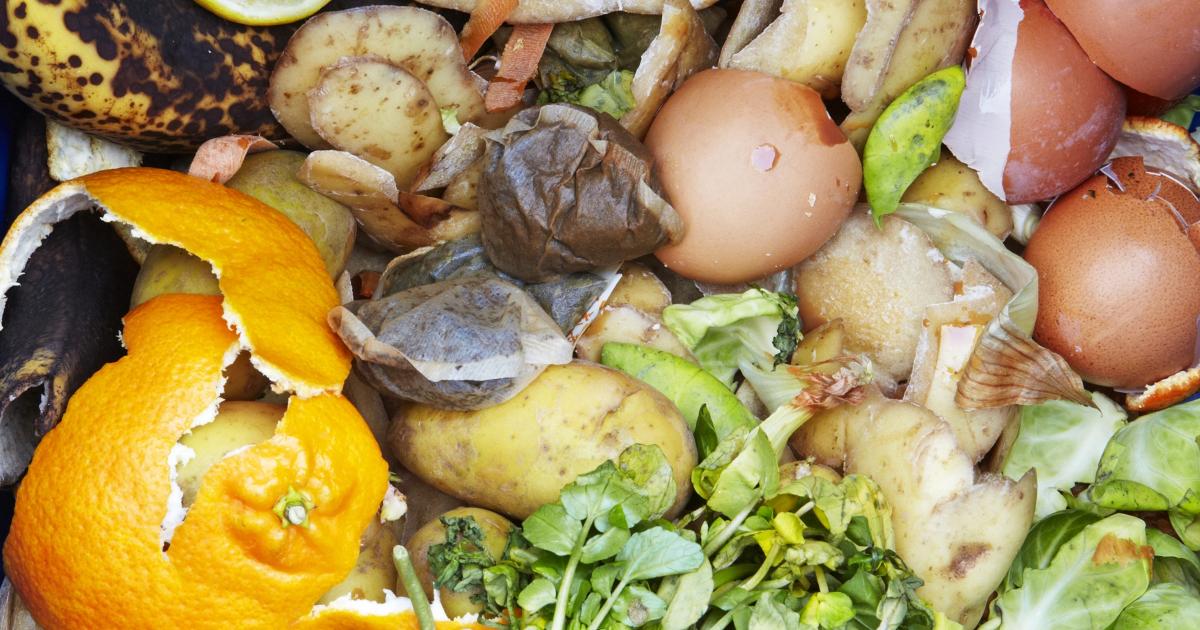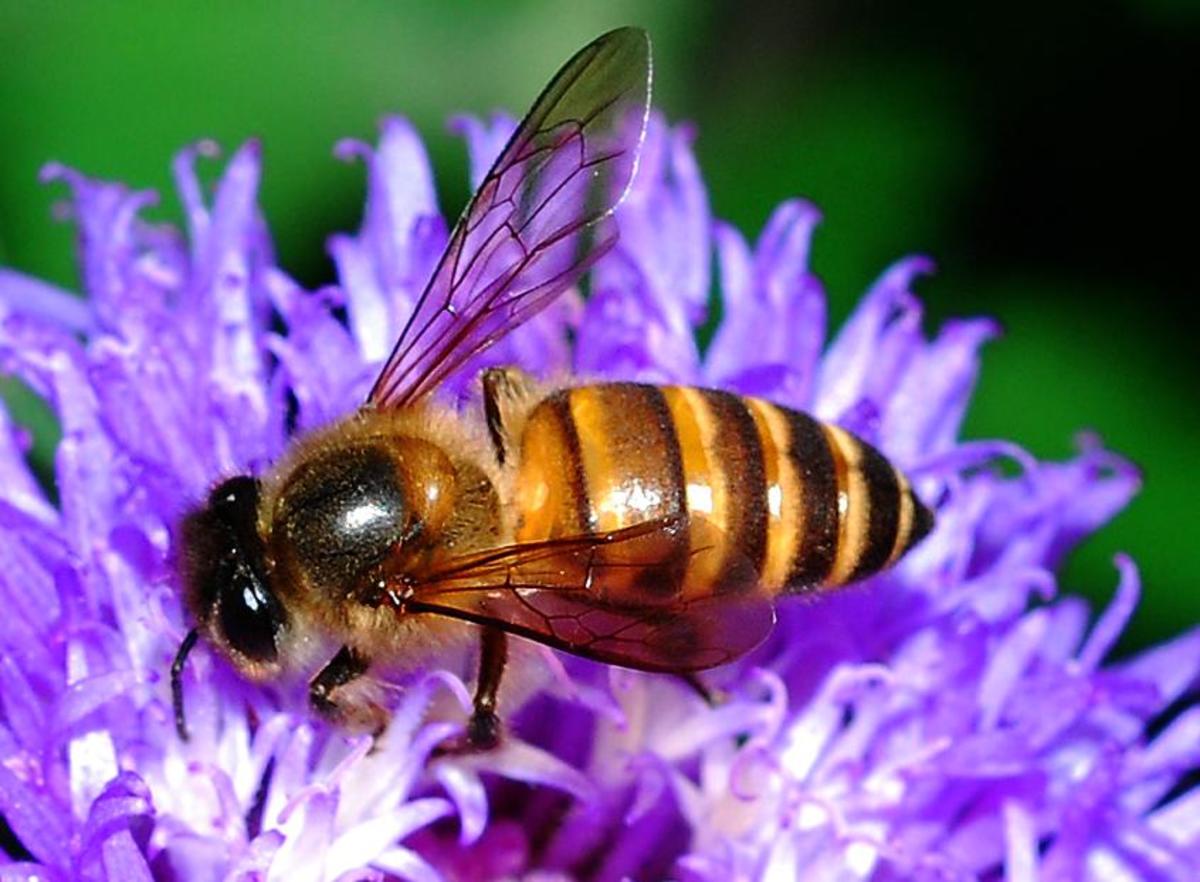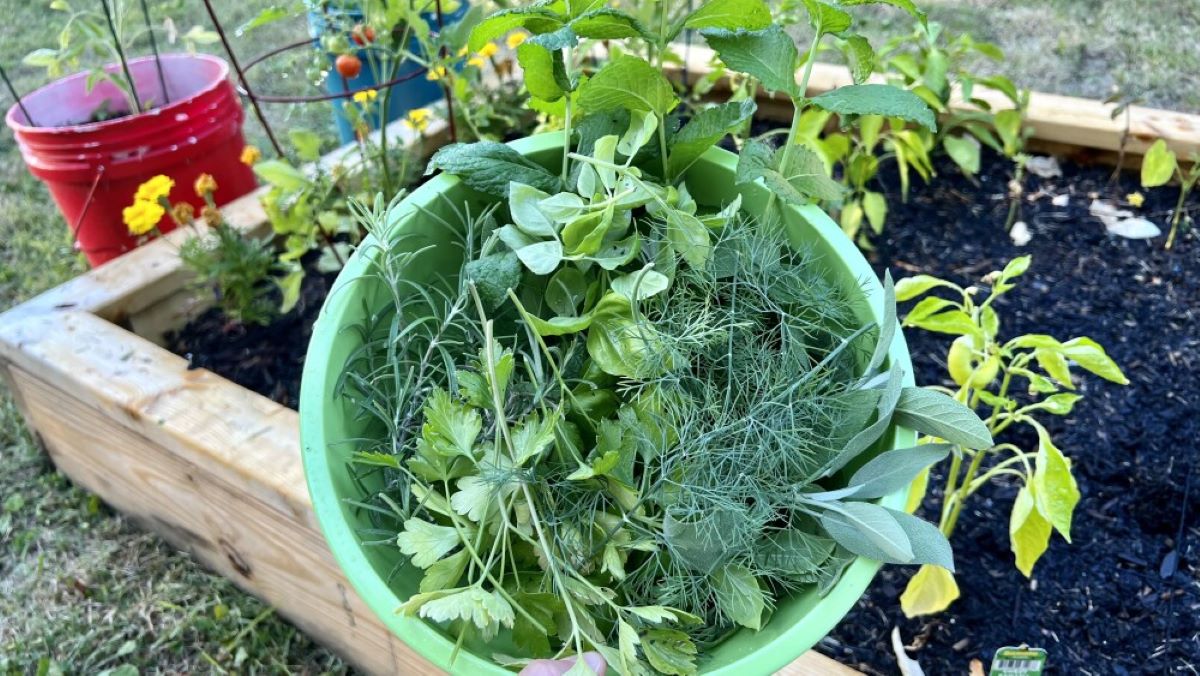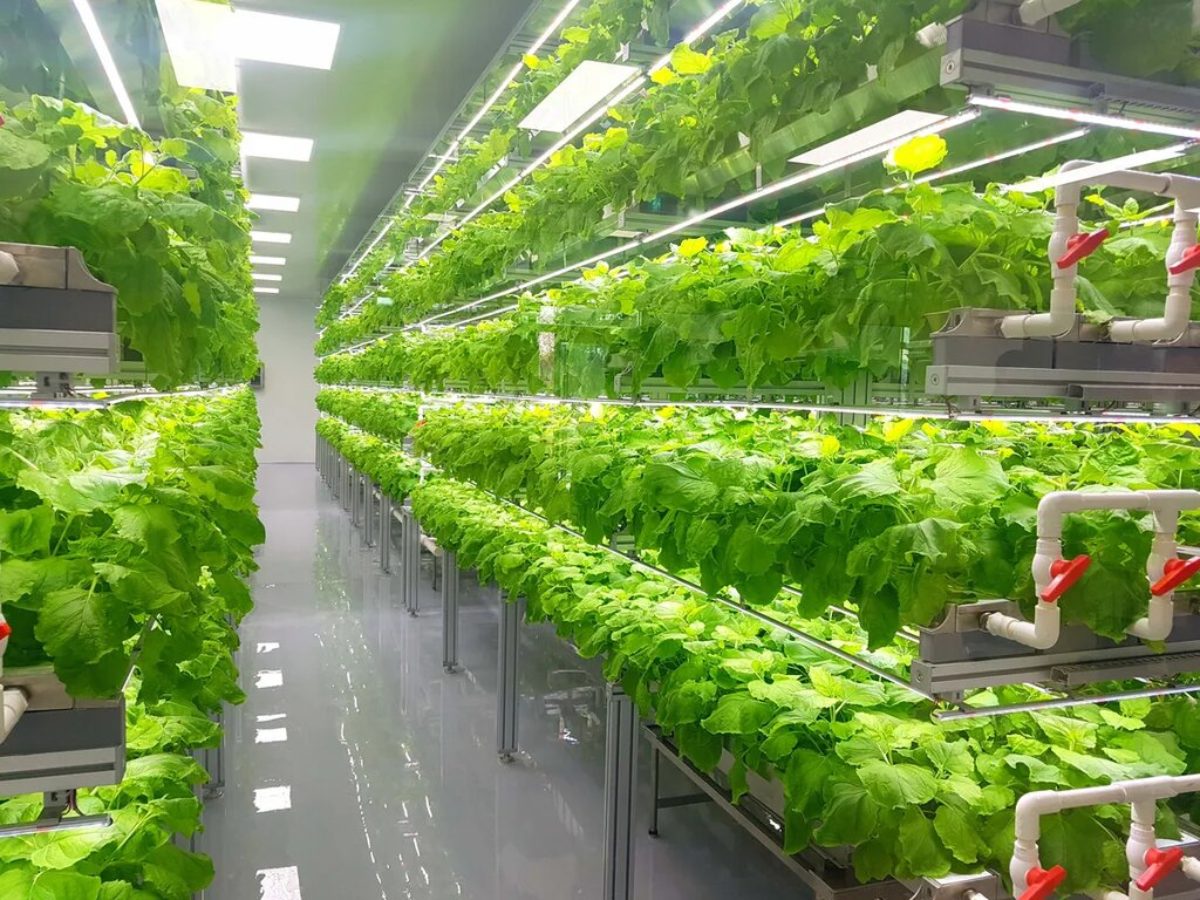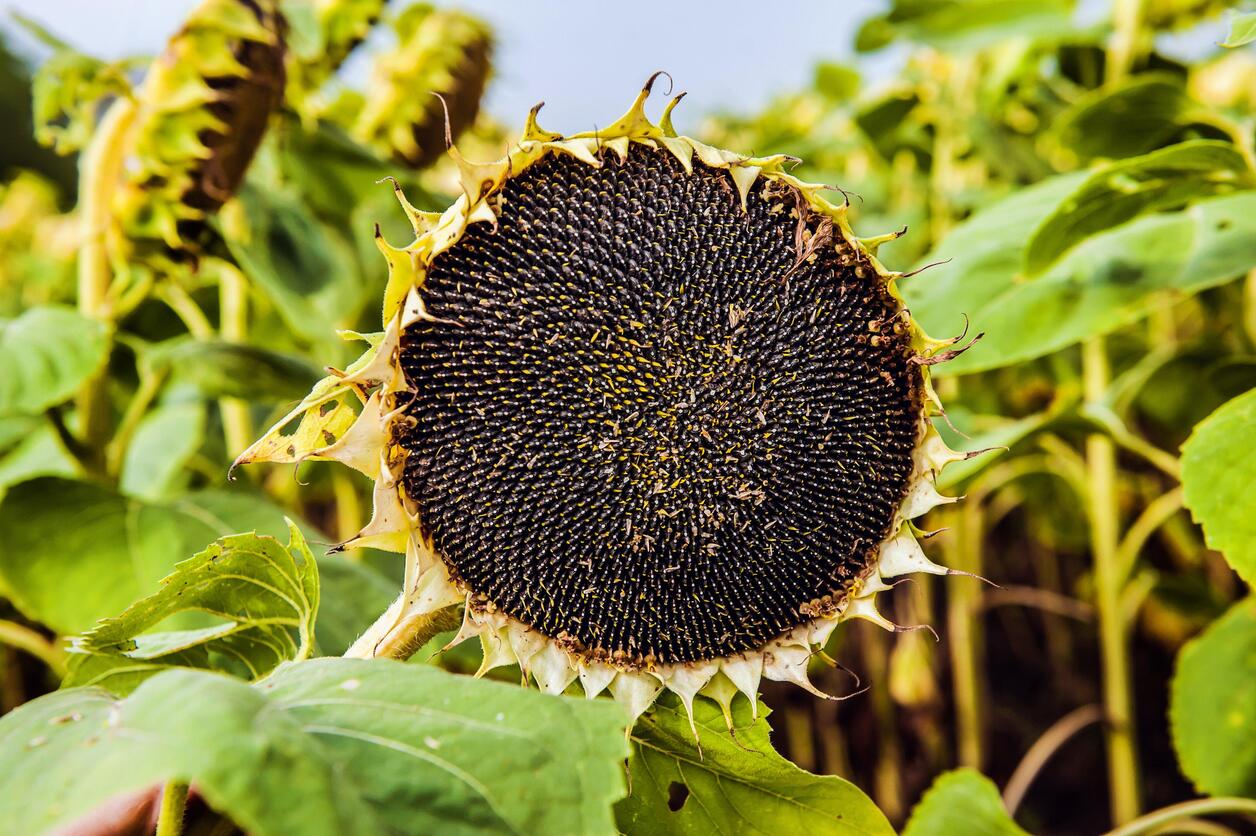Home>Gardening News and Trends>Latest News>How Do You Believe Hydroponics Can Help Future Demands For Food Production?
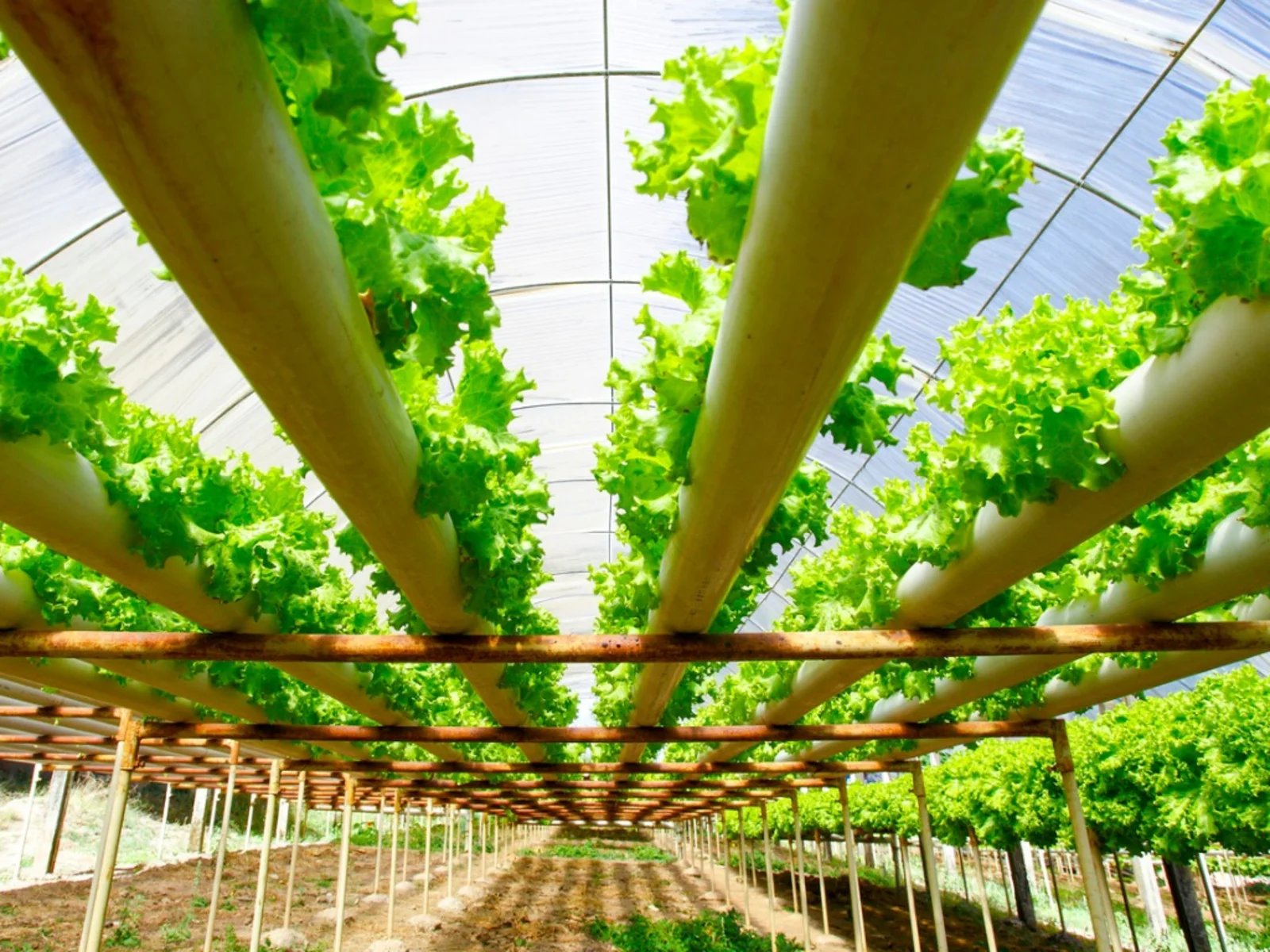

Latest News
How Do You Believe Hydroponics Can Help Future Demands For Food Production?
Modified: January 22, 2024
Discover the Latest News on Hydroponics, a revolutionary method of food production that can address future demands. Learn how hydroponics offers sustainable and efficient solutions for growing crops without soil.
(Many of the links in this article redirect to a specific reviewed product. Your purchase of these products through affiliate links helps to generate commission for Chicagolandgardening.com, at no extra cost. Learn more)
Table of Contents
- Introduction
- Definition of Hydroponics
- Benefits of Hydroponics in Food Production
- Increased Crop Yield
- Efficient Use of Resources
- Year-Round Crop Production
- Reduction in Pesticide Use
- Less Dependence on Arable Land
- Challenges and Limitations of Hydroponics
- Cost of Set-Up and Maintenance
- Technical Knowledge and Skills Required
- Energy Consumption
- Conclusion
Introduction
Hydroponics, a revolutionary method of growing plants, has garnered significant attention in recent years. With the world’s population steadily increasing, the demand for food production is reaching unprecedented levels. Traditional agricultural practices are facing numerous challenges, including limited arable land, water scarcity, and climate change. In this context, hydroponics offers a potential solution to address these issues and meet the future demands for food.
So, what exactly is hydroponics? Unlike traditional soil-based farming, hydroponics is a practice that involves growing plants without soil. Instead, plants are cultivated in nutrient-rich water solutions, which provide all the essential minerals and nutrients required for their growth. This method allows for precise control over various environmental factors, such as temperature, light, pH level, and nutrient concentration, creating optimal growing conditions for plants.
Hydroponics presents several benefits that make it an attractive alternative to conventional farming methods. First and foremost, it allows for a significant increase in crop yield. By providing plants with the ideal growing conditions and nutrients, hydroponic systems can facilitate faster and healthier plant growth. Studies have shown that hydroponic crops can yield up to 30% more than traditional soil-based crops, which is a significant boost for meeting the increasing food demands of a growing population.
Furthermore, hydroponics offers an efficient use of resources. Traditional farming relies heavily on land and water, but hydroponics requires significantly less of both. Since plants are grown in a controlled environment, there is no need for vast expanses of land, making it feasible to cultivate crops in urban areas, even in spaces as small as rooftops or vertical farms. Moreover, hydroponics uses up to 90% less water compared to traditional farming, as water is recycled through the system, significantly reducing waste and conserving this precious resource.
Definition of Hydroponics
Hydroponics is a soilless method of gardening that involves growing plants in nutrient-rich water solutions rather than traditional soil. This innovative approach to agriculture enables plants to obtain essential nutrients directly from the water, delivering them in a highly accessible and efficient manner.
In hydroponics, plants are typically placed in either nutrient-rich water or in an inert medium, such as perlite, coconut coir, or Rockwool. The nutrient solution is carefully balanced to provide all the necessary macro and micronutrients required for plant growth. This precise control over the nutrient composition, along with other environmental factors like temperature, pH levels, and light, allows for optimal plant growth and development.
There are several variations of hydroponic systems, each with its own unique features and benefits. Some of the most common types include:
- Deep Water Culture (DWC): In this method, plants are suspended in nutrient-rich water, with their roots submerged. Oxygen is supplied through air pumps or air stones to ensure adequate oxygenation of the root zone.
- Nutrient Film Technique (NFT): This system involves a thin film of nutrient-rich water flowing over the roots of the plants. The excess water is collected and recirculated in a continuous cycle.
- Drip System: This system utilizes a drip irrigation system to deliver the nutrient solution directly to the roots of the plants. The solution is dripped onto the medium or the base of the plant, allowing for the gradual absorption of nutrients.
- Aeroponics: In this method, plants are suspended in air and receive a nutrient mist sprayed directly onto their roots. The minimal contact with the growing medium allows for maximum oxygenation and nutrient absorption.
Hydroponics offers numerous advantages over traditional soil-based farming. By eliminating the need for soil, hydroponics increases the availability and accessibility of essential nutrients, resulting in faster and healthier plant growth. Additionally, hydroponics allows for precise control over environmental factors, reducing the risk of pests, diseases, and weeds. This soilless cultivation method also conserves water and enables year-round crop production, making it a promising solution to future demands for food production.
Benefits of Hydroponics in Food Production
Hydroponics offers a multitude of benefits that make it an appealing solution for food production. Let’s explore some of the key advantages associated with this innovative farming method:
- Increased Crop Yield: Hydroponic systems create optimal growing conditions for plants, allowing them to grow faster and produce higher yields compared to traditional soil-based farming. The controlled environment provides plants with the precise amount of nutrients, water, and light they need, leading to healthier and more productive crops.
- Efficient Use of Resources: Hydroponics requires significantly less land and water compared to conventional farming. With hydroponics, it is possible to grow crops vertically using systems like vertical farming or in urban areas with limited space. Additionally, hydroponic systems utilize water more efficiently by recycling it within the system, reducing water waste and conserving this precious resource.
- Year-Round Crop Production: One of the significant advantages of hydroponics is its ability to enable year-round crop production, independent of seasonal changes. By controlling environmental variables such as temperature and light, hydroponic growers can create the ideal conditions for plant growth at any time of the year. This allows for consistent and reliable harvests, mitigating the impact of seasonal variations on food production.
- Reduction in Pesticide Use: Hydroponic systems can greatly minimize the need for chemical pesticides and herbicides. The controlled environment makes it easier to manage pests and diseases, reducing the reliance on harmful chemicals. Integrated pest management techniques, such as biological control methods and natural remedies, can be effectively implemented in hydroponics to maintain crop health without the use of harmful pesticides.
- Less Dependence on Arable Land: As the global population continues to grow, arable land becomes scarcer. Hydroponics provides a solution to address this challenge by eliminating the need for large tracts of land. With hydroponics, crops can be grown in urban areas, vertical farming systems, or in regions with limited arable land, effectively expanding food production possibilities.
These benefits highlight the potential of hydroponics as a sustainable and efficient method of food production. By maximizing crop yield, conserving resources, enabling year-round cultivation, reducing pesticide use, and overcoming limitations of arable land, hydroponics offers a promising solution to meet the future demands for food.
Increased Crop Yield
One of the significant advantages of hydroponics is the potential to achieve significantly higher crop yields compared to traditional soil-based farming methods. By providing plants with optimal growing conditions and precise control over nutrient intake, hydroponic systems can enhance plant growth and productivity.
Hydroponics eliminates the limitations of soil quality and nutrient availability that often hinder crop growth in traditional agriculture. In hydroponic systems, plants receive all the necessary nutrients directly from the nutrient-rich water solutions or growing mediums in which they are cultivated. This enables plants to access nutrients more efficiently and effectively, leading to accelerated growth and higher yields.
The ability to control environmental factors is another crucial factor contributing to increased crop yield in hydroponics. Growers can manipulate factors such as temperature, light intensity, and pH levels to create the most favorable conditions for plant growth. For example, hydroponic systems can provide plants with optimal light conditions by using artificial lighting sources, which can significantly enhance photosynthesis and maximize yield potential. The ability to fine-tune these environmental conditions ensures that plants have the ideal conditions for growth throughout their life cycle.
The absence of pests and diseases, which are prevalent in traditional soil-based farming, is another factor that contributes to improved yields in hydroponics. By growing plants in a controlled environment with strict hygiene measures, hydroponics reduces the risk of pest infestations and the spread of diseases. This enables plants to focus their energy on growth and development rather than fighting off pests and diseases, leading to higher crop yields.
Additionally, hydroponics allows for dense planting and vertical cultivation, maximizing the use of available space. With traditional farming, plants need sufficient space to spread their roots and obtain nutrients from the soil. In hydroponics, plants can be grown in close proximity, utilizing vertical farming systems or stacking layers of growing trays. This high-density planting optimizes space utilization and enables growers to cultivate more plants in a smaller area, ultimately increasing crop yield per square meter.
The overall result is that hydroponic systems have been shown to produce up to 30% higher crop yields compared to traditional soil-based farming methods. This increase in productivity has a significant impact on addressing the growing food demands of a rapidly increasing global population.
Efficient Use of Resources
Hydroponics is known for its efficient use of resources, making it a sustainable and environmentally-friendly method of food production. This innovative farming technique minimizes the consumption of land, water, and fertilizers while maximizing crop yield. Let’s explore the various ways in which hydroponics optimizes resource utilization:
1. Land Utilization: Compared to traditional soil-based farming, hydroponics requires significantly less land. With hydroponics, crops can be grown vertically using systems like vertical farming or in urban areas with limited space. This vertical growth allows for multiple layers of plants, maximizing the use of available space and increasing overall productivity per square meter. The ability to grow crops in compact, controlled environments makes hydroponics ideal for urban agriculture and areas with limited arable land.
2. Water Efficiency: Hydroponics is remarkably efficient when it comes to water usage. Traditional farming methods can result in significant water losses due to evaporation and inefficient irrigation systems. In hydroponics, water is delivered directly to the roots of the plants, drastically reducing water waste. Additionally, hydroponic systems are designed to recirculate water, ensuring that any excess water is collected, treated, and reused. This closed-loop system can reduce water usage by up to 90% compared to traditional agriculture, making hydroponics an excellent choice for water-scarce regions.
3. Nutrient Optimization: Hydroponic systems provide plants with precisely balanced nutrient solutions, ensuring that they receive the necessary minerals and elements for healthy growth. Unlike traditional farming, where plants rely on the soil’s nutrient content, hydroponics allows for targeted nutrient delivery. This targeted approach minimizes the use of fertilizers, as nutrients are provided in optimal quantities, reducing the risk of nutrient runoff and pollution of water sources. The controlled nutrient supply also enhances plant health and productivity, leading to higher crop yields.
4. Reduced Chemical Usage: In traditional farming, chemicals such as pesticides, herbicides, and fungicides are often used to control pests and diseases. However, in hydroponics, the controlled environment and strict hygiene measures significantly reduce the occurrence of pest infestations and diseases. This leads to a reduced reliance on chemicals, making hydroponics a more environmentally-friendly option. Integrated pest management techniques, such as biological control methods and natural remedies, can be effectively implemented, further minimizing the need for chemical interventions.
5. Energy Conservation: While hydroponics requires energy to operate lighting and environmental control systems, the efficient use of resources in the long run leads to overall energy conservation. By maximizing crop yield per unit of land, hydroponics reduces the total energy required to produce food compared to traditional farming. Additionally, advancements in energy-efficient technologies, such as LED lighting, have further contributed to reducing energy consumption in hydroponic systems.
With its ability to utilize land efficiently, minimize water usage, optimize nutrient delivery, reduce chemical dependency, and conserve energy, hydroponics sets a new standard for sustainable and resource-conscious food production. These benefits position hydroponics as a viable solution to meet the growing global demand for food while minimizing the environmental impact.
Year-Round Crop Production
One of the remarkable advantages of hydroponics is its ability to facilitate year-round crop production, independent of seasonal limitations. Unlike traditional agriculture, which is heavily influenced by weather conditions, hydroponics offers growers the flexibility to cultivate crops throughout the year. This consistency in crop production allows for a reliable food supply and mitigates the impact of seasonal fluctuations.
Hydroponic systems create controlled environments that can be tailored to provide optimal conditions for plant growth at any time, regardless of the external weather conditions. Key factors such as temperature, light intensity, humidity, and nutrient levels can be precisely controlled and adjusted to suit the specific requirements of different plants. This level of control allows growers to mimic the ideal growing conditions needed for each crop, ensuring continuous growth and productivity.
With the use of artificial lighting systems such as LEDs, hydroponics enables plants to receive the optimal amount and quality of light. This eliminates the dependency on natural sunlight, making it possible to cultivate crops in indoor or greenhouse environments. Growers can also manipulate the photoperiod, using light cycles to control plant growth stages and flowering, further extending the growing season.
In addition to light control, hydroponics allows for efficient use of space and resources, maximizing food production capabilities throughout the year. With vertical farming systems and high-density planting techniques, growers can stack multiple layers of crops, maximizing the use of available space. This vertical growth method provides additional growing area without the need for expanding the physical footprint, resulting in higher yields per square meter.
Another factor contributing to year-round crop production in hydroponics is the ability to grow crops without the need for soil. Traditionally, soil-based agriculture is restricted by the availability and quality of arable land. However, hydroponics eliminates this limitation by allowing plants to grow in water-based nutrient solutions or inert growing mediums. This soilless cultivation method removes the dependence on soil quality, enabling plants to thrive in controlled environments, regardless of the soil conditions outside.
The year-round crop production potential of hydroponics has significant implications for food security, especially in areas with limited growing seasons or harsh climates. By eliminating the constraints of traditional agriculture and providing a consistent supply of fresh produce, hydroponics can ensure a reliable source of food, reduce reliance on seasonal imports, and enhance food self-sufficiency.
Overall, hydroponics’ ability to offer consistent and continuous crop production, irrespective of the season, opens up new opportunities for sustainable food production. By overcoming the limitations of traditional agriculture and providing a reliable food supply year-round, hydroponics can play a crucial role in meeting the growing global demand for fresh and nutritious food.
Reduction in Pesticide Use
Hydroponics, as a controlled and soilless method of farming, offers significant advantages in terms of reducing the need for pesticides. Traditional agriculture often relies on pesticide applications to combat pests and diseases that can damage crops. However, hydroponic systems, with their controlled environments and strict hygiene measures, minimize the occurrence of such issues, leading to a significant reduction in pesticide use.
One of the primary reasons for reduced pesticide use in hydroponics is the absence of soil. Many pests and diseases originate from the soil, and hydroponic systems eliminate the contact between plants and the ground. Without the presence of soil-borne pests, growers can focus on preventing pest infestations and diseases that are transmitted through other means, such as pests introduced by airflow or insufficient cleaning protocols.
In hydroponics, pests can be managed through integrated pest management (IPM) strategies that prioritize prevention, monitoring, and control measures. IPM in hydroponics often entails biological pest control methods, such as introducing beneficial insects or using microbial agents. For example, ladybugs are commonly used to control aphids, and predatory mites can help manage spider mites. These natural predators consume pests, reducing the need for chemical pesticides.
The controlled environment of hydroponic systems also allows for enhanced pest monitoring and early detection. Growers can regularly inspect plants for signs of pest damage and take immediate action when necessary. Early detection enables targeted interventions and prevents pest infestations from spreading, reducing the need for widespread pesticide applications.
Furthermore, hydroponic systems promote good hygiene practices, which aid in pest and disease prevention. Growers can ensure that the growing environment, tools, and equipment are clean and free from potential contaminants. Removing potential breeding grounds for pests and regularly sanitizing the growing area significantly reduces the risk of infestations, minimizing the need for pesticide treatments.
Another advantage of hydroponics in reducing pesticide use is its ability to control environmental factors. By optimizing temperature, humidity, and lighting, hydroponic growers can create an inhospitable environment for many pests and diseases, minimizing their impact on crops. This proactive approach reduces the reliance on reactive pesticide applications and fosters a more sustainable and balanced ecosystem within the hydroponic system.
Overall, hydroponics’ controlled environment, emphasis on hygiene, and implementation of natural pest control methods significantly reduce the need for pesticide use. By adopting integrated pest management techniques and focusing on prevention and early intervention, growers can effectively manage pests and diseases without compromising crop yield or quality. This reduction in pesticide usage not only contributes to sustainable farming practices but also promotes environmental and human health, making hydroponics an environmentally-friendly choice for food production.
Less Dependence on Arable Land
As the global population continues to rise, the availability of arable land for traditional agriculture is becoming increasingly limited. However, hydroponics offers a solution by enabling food production in environments with little or no arable land. This method reduces our dependence on traditional farming practices and opens up new possibilities for cultivating crops in unconventional settings.
With hydroponics, crops can be grown in a controlled environment using nutrient-rich water solutions or inert growing mediums, eliminating the need for fertile soil. This eliminates the reliance on specific soil conditions for plant growth and allows for the utilization of non-agricultural land or areas with poor soil quality. The ability to grow crops without soil expands the potential for urban agriculture, rooftop gardens, vertical farming systems, and even underground facilities.
By utilizing vertical farming techniques, hydroponics increases the productivity per square meter of available space. Multiple layers of crops can be stacked vertically, maximizing the use of space and increasing overall food production capacity. This high-density planting method allows for greater efficiency in land utilization, reducing the amount of land required to grow crops while maximizing output.
Hydroponics also enables food production in areas with limited access to arable land, such as urban environments. By utilizing small spaces like rooftops or indoor facilities, hydroponics brings the cultivation of fresh produce closer to the consumers, reducing the need for long-distance transportation and minimizing the carbon footprint associated with food distribution. Urban hydroponic farms also have the potential to strengthen local food systems, promoting food security and reducing dependence on distant agricultural regions.
Furthermore, hydroponics can facilitate food production in regions with harsh climates or unfavorable growing conditions. By controlling environmental factors such as temperature, humidity, and light, hydroponic growers can create optimal conditions for plant growth regardless of external weather conditions. This allows for the cultivation of crops in extreme climates, arid regions, or areas prone to natural disasters, where traditional farming may be challenging or impossible.
In addition, hydroponics can help to repurpose underutilized or abandoned urban spaces for agricultural purposes. Vacant buildings, warehouses, or industrial sites can be transformed into hydroponic farms, breathing new life into these areas and contributing to the revitalization of urban landscapes. This repurposing of spaces not only extends the potential for food production but also enhances the visual appeal and ecological impact of urban areas.
By reducing our dependence on arable land, hydroponics creates opportunities for sustainable food production in unconventional settings. Whether it’s utilizing vertical farming systems, leveraging urban spaces, or overcoming climate limitations, hydroponics offers a flexible and innovative approach to growing food, reshaping our relationship with arable land and enabling us to meet the future demands for food in a more efficient and sustainable manner.
Challenges and Limitations of Hydroponics
While hydroponics offers numerous advantages, it is important to acknowledge that there are also challenges and limitations associated with this method of farming. Understanding these factors is crucial for successful implementation and maximizing the potential of hydroponics. Let’s explore some of the key challenges and limitations:
1. Cost of Set-Up and Maintenance: The initial investment required to set up a hydroponic system can be relatively high compared to traditional soil-based farming. Cost considerations include purchasing equipment, such as grow lights, pumps, and nutrient systems, as well as ongoing expenses for electricity and water. Additionally, the maintenance and monitoring of the system, including nutrient balancing and pH control, require continuous attention and expertise.
2. Technical Knowledge and Skills Required: Hydroponics involves a complex understanding of plant physiology, nutrient management, and environmental control. Growers need to have a solid understanding of hydroponic principles, water chemistry, and pest management techniques to ensure the success of their crops. The learning curve can be steep for newcomers to hydroponics, and the need for continuous learning and adaptation to new technologies can be demanding.
3. Energy Consumption: Hydroponic systems often rely on artificial lighting to provide plants with the necessary light for photosynthesis. The use of electricity to power grow lights can result in higher energy consumption compared to traditional farming methods that rely on natural sunlight. This increased energy demand and associated carbon footprint should be taken into account when considering the sustainability of hydroponic systems.
4. Water Quality and Nutrient Management: Hydroponics is heavily reliant on water quality and nutrient management. The nutrient solution must be carefully formulated to provide the right balance of essential minerals for plant growth. Monitoring water quality and preventing nutrient imbalances or toxicities is crucial to plant health and productivity. Moreover, the availability of a clean and reliable water supply is essential, as any contaminants or fluctuations in water quality can significantly impact crop performance.
5. Vulnerability to System Failures: Hydroponic systems are intricate and rely on various components working together. In the event of system failures, such as pump malfunctions or power outages, crops can be susceptible to rapid decline or loss. Backup systems and redundancy measures should be in place to minimize the risks associated with system failures and protect against potential crop losses.
6. Limited Crop Variety: While hydroponics can support the growth of a wide range of crops, there are limitations to certain plant species that may not thrive in a hydroponic environment. Plants with deep taproots or those that require specific soil conditions may not be suitable for hydroponic cultivation. However, ongoing research and advancements in hydroponic techniques are expanding the range of crops that can be successfully grown hydroponically.
7. Market Demand and Perception: Hydroponically grown produce may face challenges in terms of consumer acceptance and market demand. Some consumers may have a preference for traditionally grown organic produce or may have concerns about the use of synthetic nutrients. Educating consumers about the benefits and safety of hydroponically grown crops is essential in building trust and expanding the market for hydroponic produce.
By acknowledging and addressing these challenges and limitations, hydroponics can continue to evolve and thrive as a sustainable and efficient method of food production. Ongoing research, technological advancements, and knowledge-sharing within the hydroponic community can contribute to overcoming these obstacles and further optimize the benefits of hydroponics for future food production.
Cost of Set-Up and Maintenance
One of the significant challenges of hydroponics is the cost associated with setting up and maintaining a hydroponic system. While hydroponics offers numerous benefits, the initial investment and ongoing expenses can be higher compared to traditional soil-based farming methods.
The cost of setting up a hydroponic system can vary depending on factors such as scale, complexity, and the type of hydroponic system chosen. Building or converting a dedicated space for hydroponic farming may require investments in infrastructure, including grow trays, irrigation systems, nutrient delivery systems, lighting fixtures, and environmental control equipment. These costs can accumulate, especially for larger commercial operations. However, with advancements in technology and increased availability of hydroponic equipment, the initial investment cost has been gradually decreasing over the years.
In addition to the upfront costs, ongoing maintenance expenses should be considered. Hydroponic systems require regular monitoring and adjustment of environmental parameters such as temperature, humidity, pH levels, and nutrient concentrations. This may involve investing in monitoring tools and automated systems to ensure optimal growing conditions. The continuous supply of electricity and clean water also contributes to the operational costs of a hydroponic system.
One area that significantly impacts the maintenance cost is the nutrient solution. Hydroponics relies on precisely formulated nutrient solutions to provide plants with the required minerals and elements for growth. These nutrient solutions need to be regularly monitored, adjusted, and replenished to maintain nutrient balance and ensure optimal plant health. Depending on the crop type and growth stage, the nutrient solution may need to be customized accordingly, adding to the cost of nutrient inputs.
Furthermore, hydroponics requires technical expertise and knowledge to operate and maintain the system effectively. Growers need to have a solid understanding of hydroponic principles, nutrient management, pest control techniques, and the overall functioning of the system. Additional training or hiring knowledgeable staff may be necessary, adding to the operational costs.
Despite the initial investment and maintenance costs, it’s important to note that the economic viability of hydroponics can vary depending on factors such as crop selection, market demand, and operational efficiency. High-value crops that require specific growing conditions or have a higher market value can often justify the costs associated with hydroponic production. Moreover, the potential for higher yields, year-round cultivation, and the ability to produce crops in urban settings can provide unique market opportunities and increase the return on investment.
As the popularity of hydroponics continues to grow, the availability of affordable equipment, technological advancements, and shared industry knowledge are helping to reduce costs and make hydroponic systems more accessible to a wider audience. By exploring cost-saving strategies, implementing efficient resource management practices, and leveraging economies of scale, growers can mitigate the initial investment and maintenance costs, making hydroponics a viable option for sustainable food production.
Technical Knowledge and Skills Required
Successful implementation of hydroponics requires a certain level of technical knowledge and skills. While hydroponics offers numerous benefits, it is important to understand the complexities and requirements associated with this method of farming.
Firstly, hydroponics requires a solid understanding of plant physiology and nutrition. Growers need to be familiar with the specific nutrient requirements of different crops and understand how to provide the optimal balance of nutrients in the hydroponic system. They must know which essential minerals are required for healthy plant growth and how to monitor and adjust nutrient levels as needed.
Furthermore, growers need to be proficient in water chemistry and be able to monitor and maintain the pH levels of the nutrient solution. The pH directly affects nutrient availability to the plants, and variations outside the optimal range can impact plant growth and productivity. Regular monitoring and adjustments are necessary to ensure plants receive the appropriate pH conditions for optimal nutrient uptake.
Hydroponic growers must also possess knowledge of environmental control. Maintaining the ideal temperature, humidity, and light conditions within the hydroponic system is critical for plant growth. This may involve managing artificial lighting systems, ventilation, fans, and temperature control devices to create a suitable environment for the specific crop requirements. Monitoring and adjusting these parameters based on plant needs and growth stages are essential for successful hydroponic cultivation.
Another significant aspect of hydroponics is pest management. Growers need to be familiar with integrated pest management (IPM) techniques, which involve preventing, monitoring, and controlling pests through biological control methods and natural remedies. Recognizing common pests and diseases, implementing preventative measures, and taking prompt action when necessary are essential skills for maintaining healthy crops in a hydroponic system.
Lastly, staying updated on the latest hydroponic techniques, advancements in equipment, and industry practices is crucial. Hydroponics is a rapidly evolving field, with continuous research and development of new technologies and methodologies. Growers are encouraged to participate in workshops, industry conferences, and online forums to exchange knowledge and learn from experienced practitioners.
While acquiring the necessary technical knowledge and skills may seem challenging, there are various educational resources available to support hydroponic growers. These include online courses, tutorials, books, and research papers that cover the fundamental principles of hydroponics and provide practical guidance on system design, nutrient management, and troubleshooting.
By investing time and effort into learning and staying informed, growers can overcome these technical challenges and build the necessary skills to successfully operate a hydroponic system. The continuous improvement of technical knowledge and skills not only ensures the optimal performance of the system but also allows growers to adapt to new advancements and innovations in hydroponic farming.
Energy Consumption
One important consideration in hydroponics is the consumption of energy, which is primarily driven by the use of artificial lighting systems and environmental control measures. While hydroponics offers numerous benefits in terms of resource efficiency, it is important to recognize the energy demands associated with this farming method.
The use of artificial lighting is a significant contributor to energy consumption in hydroponics. In indoor or greenhouse hydroponic systems, artificial lighting is often necessary to provide plants with the required intensity and duration of light for photosynthesis. Grow lights, such as high-intensity discharge (HID) lamps or light-emitting diode (LED) fixtures, can be energy-intensive, particularly when covering large cultivation areas. However, advances in LED technology have led to more energy-efficient lighting options, helping to reduce energy consumption in hydroponics.
Aside from lighting, hydroponic systems require energy to power environmental control measures. Maintaining optimal temperature, humidity levels, ventilation, and air circulation is critical for successful hydroponic cultivation. This may involve using fans, exhaust systems, heating, or cooling equipment, depending on the specific environmental requirements of the crop and the location. The energy consumption associated with these systems should be considered, especially in regions with extreme climates or in areas where ambient conditions cannot be relied upon for optimal plant growth.
While hydroponics does consume energy, it is important to note that the energy demands may vary depending on factors such as the scale of the operation, the efficiency of equipment, and the use of energy-saving practices. Implementing energy conservation measures, such as utilizing energy-efficient lighting fixtures, optimizing lighting schedules, and properly insulating growing areas, can help reduce the overall energy consumption of hydroponic systems.
It is also worth considering the potential for alternative energy sources in hydroponics. Renewable energy technologies, such as solar panels or wind turbines, can be integrated into hydroponic systems to offset the energy consumption and reduce reliance on traditional energy grids. This approach not only reduces the carbon footprint associated with hydroponic farming but also contributes to the sustainability and resilience of the overall operation.
Furthermore, advancements in technology and research are continuously improving energy efficiency in hydroponic systems. From energy-saving lighting systems to smart environmental controls that optimize energy usage, innovations aim to minimize energy consumption while maintaining optimal growing conditions. Ongoing efforts are being made to develop more energy-efficient hydroponic technologies and designs.
Ultimately, while hydroponics does consume energy, it is important to view energy consumption as a factor that can be managed and optimized. By using energy-efficient equipment, implementing energy-saving practices, and exploring alternative energy sources, growers can minimize the environmental impact and enhance the sustainability of their hydroponic operations.
Conclusion
Hydroponics presents a promising solution to address the future demands for food production. With its soilless cultivation method and precise control over growing conditions, hydroponics offers numerous benefits for enhancing crop yield, resource utilization, year-round production, reducing pesticide use, and overcoming limitations in arable land.
By providing optimal growing conditions, hydroponic systems can significantly increase crop yields compared to traditional soil-based farming methods. The efficient utilization of resources, including water and space, makes hydroponics a sustainable approach to food production. The ability to grow crops in controlled environments allows for year-round cultivation, irrespective of external weather conditions, ensuring a reliable supply of fresh produce.
Hydroponics also reduces the dependency on pesticides by implementing integrated pest management strategies and maintaining a clean and controlled growing environment. This helps promote the use of natural predators and biological control methods, resulting in healthier crops and reduced environmental impact.
In addition, hydroponics enables food production in areas with limited arable land, such as urban environments, by utilizing vertical farming systems and repurposing underutilized spaces. This expands the possibilities for localized and sustainable food production, reducing the need for long-distance transportation and increasing food self-sufficiency in urban areas.
However, hydroponics does come with its challenges and limitations, including the cost of set-up and maintenance, technical knowledge and skills required, energy consumption, and limited crop variety. These considerations highlight the importance of proper planning, ongoing education, and implementing resource-efficient practices to maximize the potential of hydroponics.
In conclusion, hydroponics offers an innovative and sustainable approach to food production. It enables growers to optimize resource utilization, overcome limitations, and increase productivity. As technology and knowledge in hydroponics continue to advance, it is anticipated that hydroponics will play an increasingly significant role in meeting the global demand for fresh and nutritious food while minimizing environmental impact.

